When I got back home I did a few electrical tests and the generator and R/R seemed to check out ok.
When I pulled the side cover to check the fuses this is what I found.
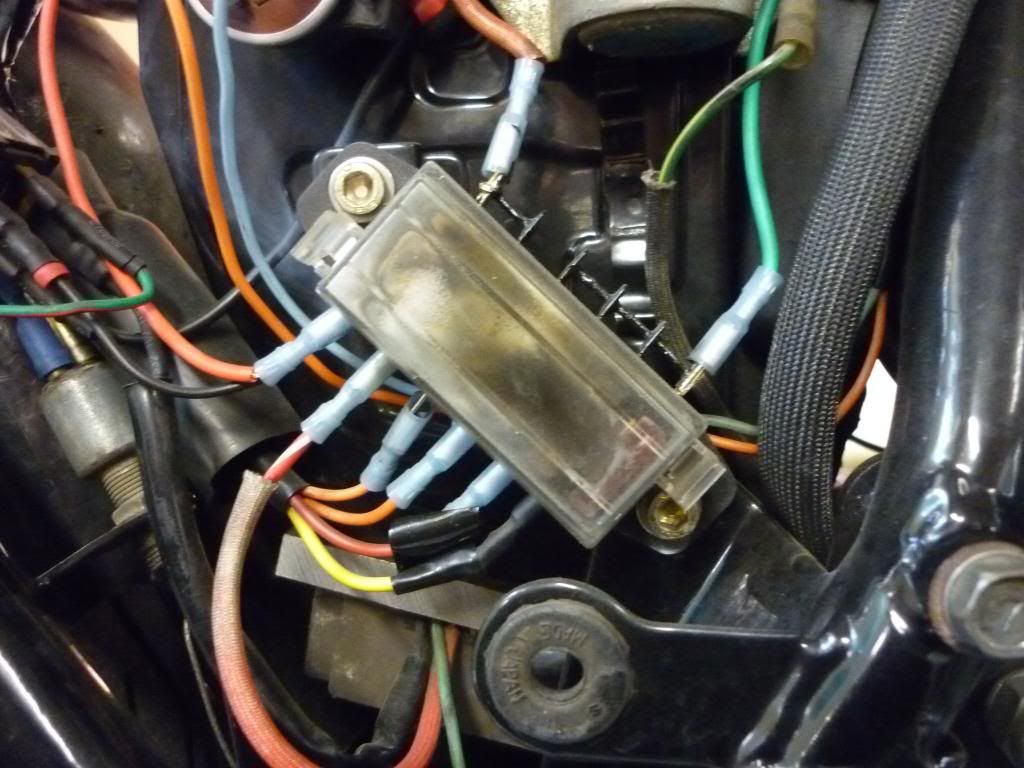
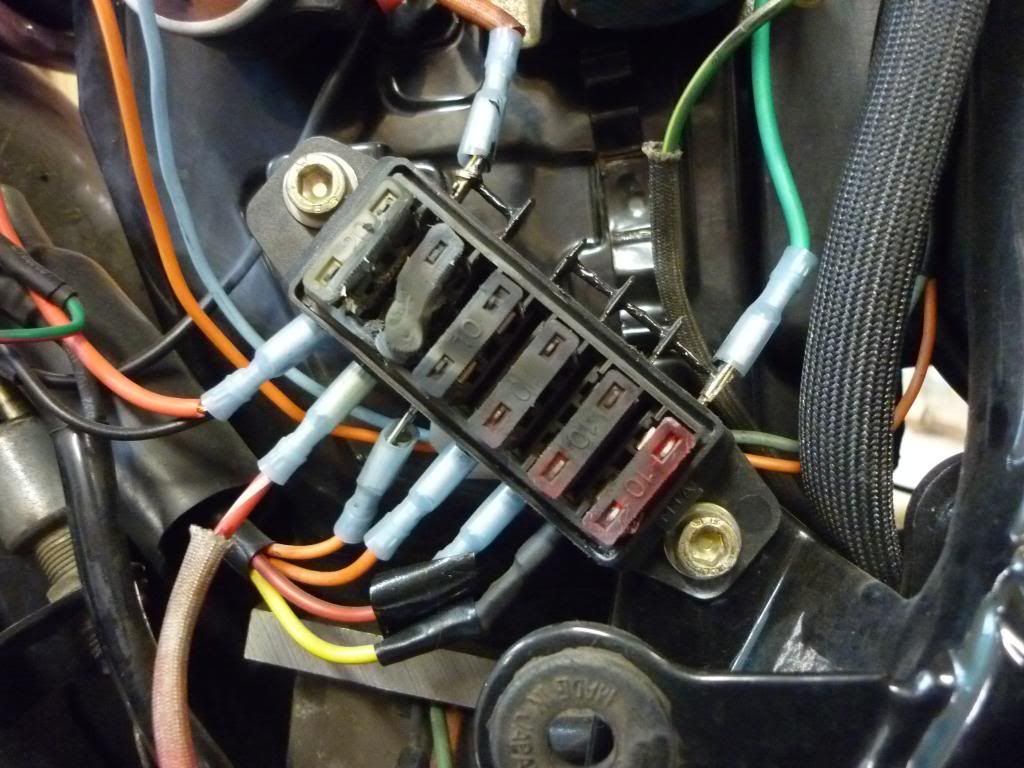
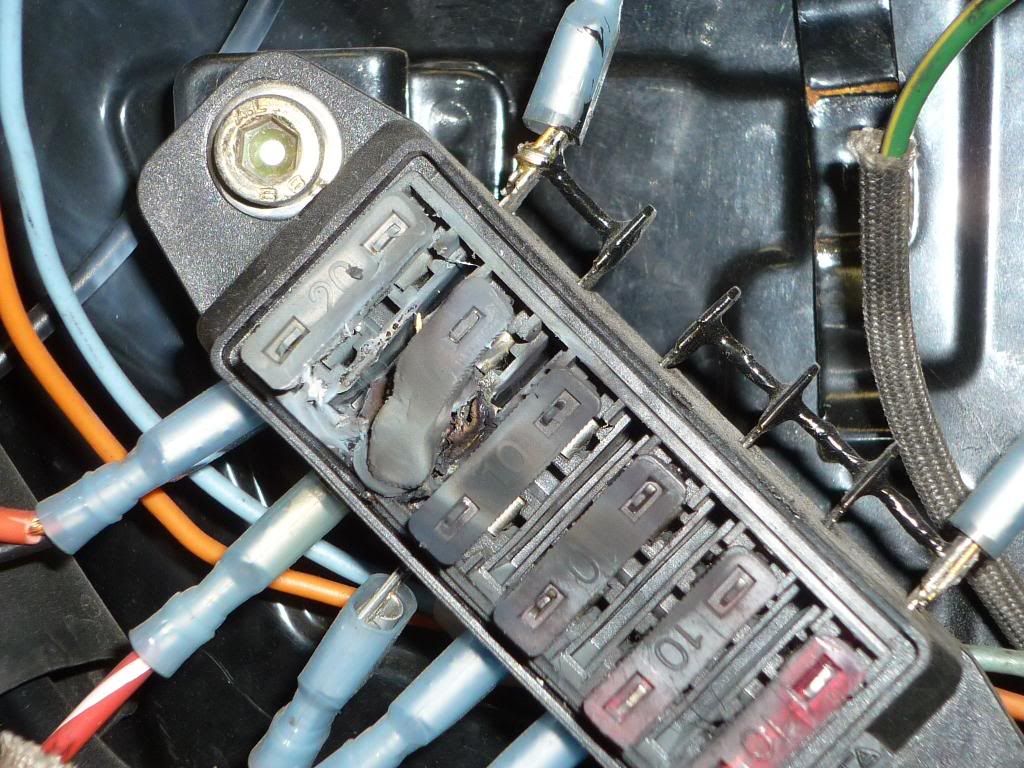
The culprit is the fuse between the R/R red wire and the other wire going to the starter solenoid that then goes back to the battery.
The next picture shows that none of the wires or connectors are melted or have even got hot by appearance.
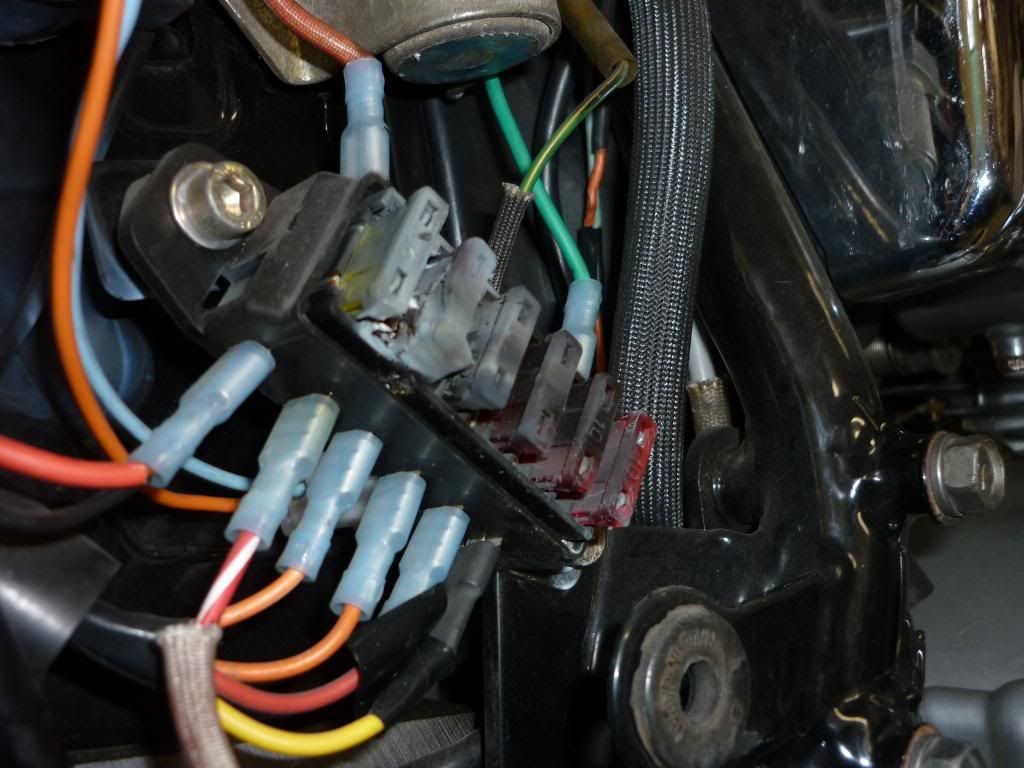
The picture below shows the two left hand wires at the bottom of the fusebox are connected to the red wire above them that runs to the solenoid. The RH wire of these two at the bottom runs to the R/R and the wire on the LH side runs up to the ign switch.
BTW when I was riding the bike there were no malfunctions of any kind with ign, blinkers, coils, etc.
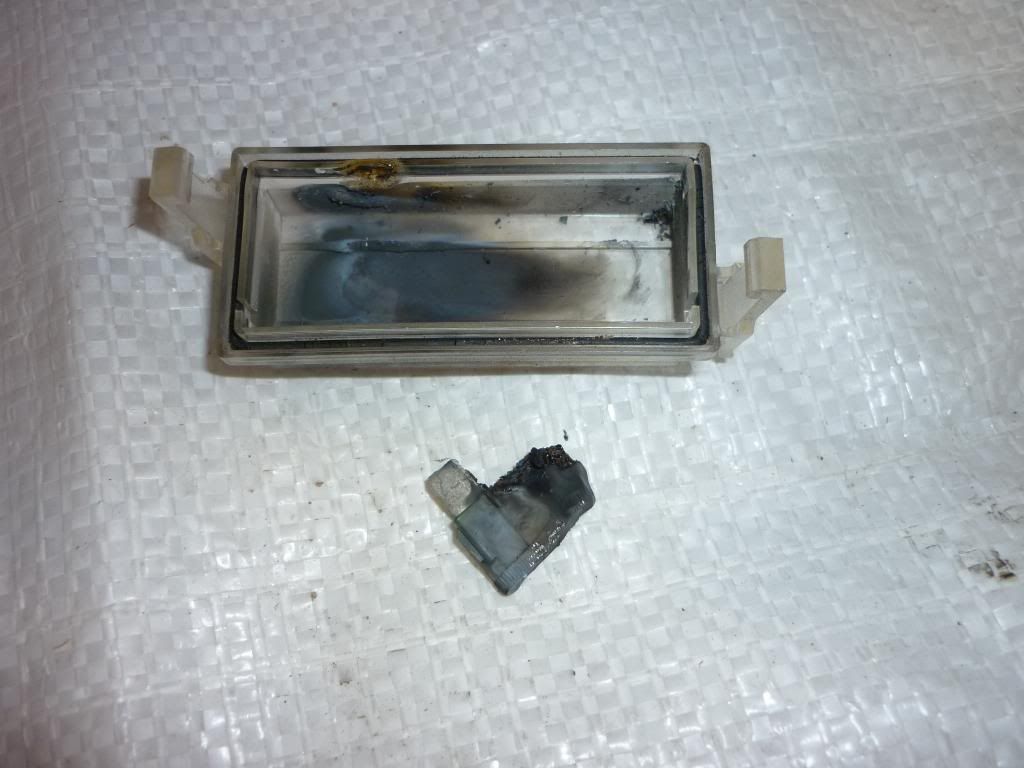



My question is if there was this much heat through the fuse why didn't it blow and save the fusebox especially when the heat didn't have any effect on the adjacent wiring.
Any ideas. Also what has caused this problem in the first place? Where did ALL this heat come from?
BTW I was using a 30A fuse with the thought that the current coming from the R/R might require a heavier fuse.
Comments please.
Also I removed the three wires that were involved at the LH end of the fusebox and ran them through another spare fusebox I had and the bike started fine and charged at 14.5v at around 3000rpm.
Thanks for any help offered.
.png)


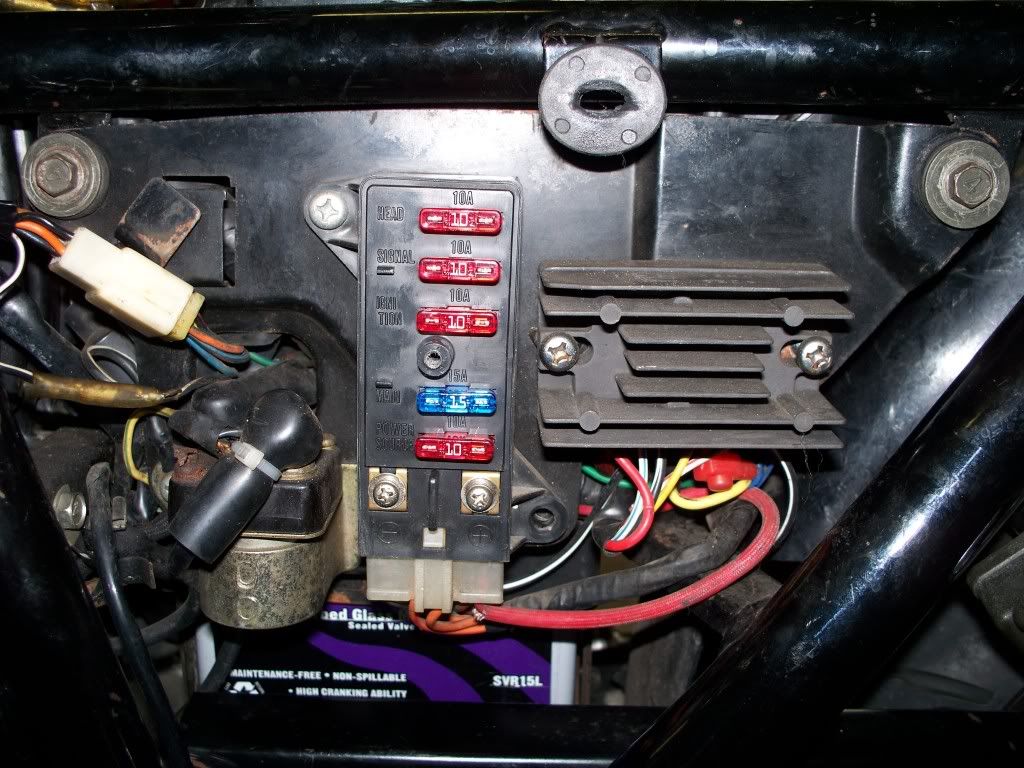
.png)
 Have you you done the grounding mods? It all looks very stock.
Have you you done the grounding mods? It all looks very stock.
Comment